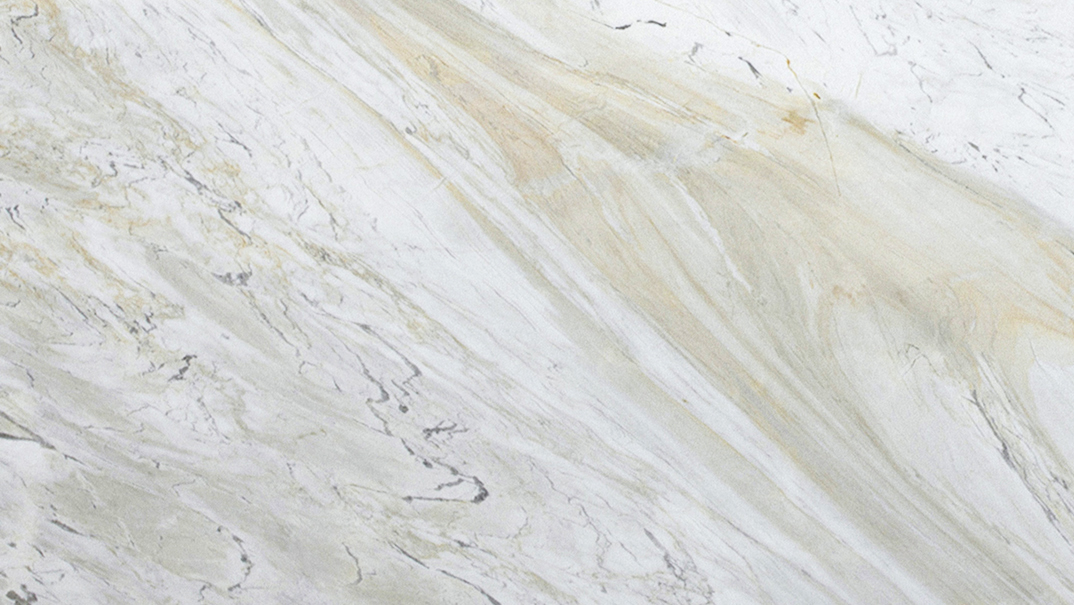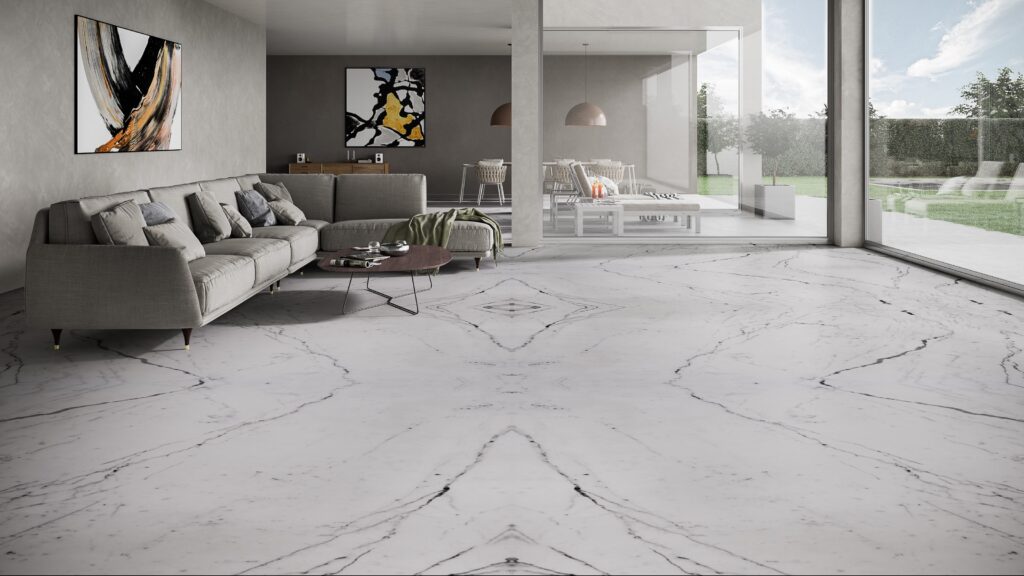Marble stone has long been admired for its aesthetic beauty and enduring properties. As a metamorphic rock, it is formed from limestone under the intense heat and pressure of the Earth’s crust. This process leads to the recrystallization of the minerals in the original limestone, giving marble its characteristic appearance and structure. Marble is widely used in architecture, sculpture, and home decor, and it remains one of the most versatile natural stones on the market today.
In this article, we’ll explore everything you need to know about marble stone—from its composition and formation to its various uses, pros and cons, and tips for choosing marble for your next project.

Marble is a metamorphic rock that forms when limestone undergoes recrystallization due to heat, pressure, and chemical processes. The primary mineral in marble is calcite (calcium carbonate), but depending on the geological environment, the marble may contain varying amounts of other minerals, including quartz, mica, and graphite. These minerals affect the stone’s color, texture, and overall appearance.
The most iconic marbles, like the famous Carrara marble from Italy, are known for their fine-grained texture and pristine white color with subtle veining. However, marble can also be found in various colors, including green, pink, gray, and black, depending on the minerals present.
Marble’s formation process begins with limestone, a sedimentary rock primarily composed of calcite. Over millions of years, limestone can undergo significant pressure and heat deep within the Earth’s crust, causing the calcite to recrystallize into interlocking crystals. This process is called metamorphism. The end result is marble, a denser and more durable stone than its predecessor, limestone.
During metamorphism, other minerals may also be incorporated into the rock, influencing its color and texture. For example, iron oxide causes red and orange hues, while talc can produce greenish shades. The interaction between minerals and environmental conditions results in a wide variety of marble types.
Marble can be quarried from various regions around the world, with notable sources in Iran, Carrara, Italy, Macedonia, India, and the United States. Famous marbles like Calacatta and Statuario from Italy are renowned for their pristine appearance and luxurious appeal.

Marble has been used for centuries for its beauty, elegance, and versatility. Here are some of the most common applications of marble stone:
Marble has been the material of choice for architects and builders throughout history, particularly in ancient Rome and Greece. The Parthenon and the Lincoln Memorial are just two examples of structures made with marble. Its aesthetic appeal, combined with its ability to withstand the elements, makes it ideal for use in large-scale architecture.
Today, marble is a popular choice for countertops, flooring, and wall cladding in homes and commercial spaces. Its luxurious appearance adds sophistication to kitchens, bathrooms, and living rooms. Marble flooring is especially admired for its classic appeal and timeless elegance.
See : Pietra grey marble
Marble has been used as a medium for sculptures since ancient times. Famous works by Michelangelo, including the David statue, are carved from marble. The stone’s fine grain and ability to be polished to a smooth surface make it ideal for delicate carving.
Marble countertops remain a favorite among homeowners, chefs, and designers. While marble is relatively softer than granite, its luxurious and clean aesthetic makes it a preferred material in kitchens. Its ability to be polished to a mirror-like finish also gives the kitchen a sophisticated, professional look.
See : Bianco crystal marble

Marble offers a variety of benefits, which is why it continues to be a popular material for both functional and decorative uses.
Aesthetic Appeal: Marble is renowned for its elegant appearance and luxurious feel. The intricate patterns and natural veining of marble give it a sophisticated and timeless look. Whether used for flooring, countertops, or wall features, marble adds a touch of refinement to any space.
Heat Resistance: Marble has excellent thermal properties, which makes it a good choice for surfaces that come into contact with heat, such as countertops or fireplaces.
Variety of Colors: With marble available in a range of colors and patterns, there’s a variety of options to suit different design styles—from classic white to bold, dark tones and even colored veins.
Longevity: When properly maintained, marble is a long-lasting material that can stand the test of time. Marble surfaces can remain beautiful and functional for decades, or even centuries, making it a worthwhile investment for home and business owners.
While marble is admired for its beauty, there are some drawbacks to consider before choosing it for a project.
Susceptibility to Stains: Due to its porosity, marble can absorb liquids, which may lead to staining over time. Acidic substances such as lemon juice, vinegar, and wine can cause etching, leaving dull spots on the surface.
Scratch and Chip Risk: While marble is relatively durable, it is softer than other stones, such as granite, which makes it more susceptible to scratches and chips, especially on high-traffic surfaces like kitchen countertops.
Maintenance Requirements: Marble requires regular maintenance to keep it looking its best. This includes sealing the stone to prevent staining and using gentle cleaning methods to avoid damage.
Cost: Marble is generally more expensive than other stones, such as granite or quartz. The cost varies depending on the type, quality, and origin of the marble, but it is typically considered a premium material.
When considering marble stone for your home or business, think about its aesthetic value, maintenance needs, and how well it will fit into your space. Marble stone can be an ideal material for kitchen countertops, bathroom vanities, flooring, and even accent walls. However, it may not be the best choice in high-traffic areas where scratches and stains are more likely.
For those who prioritize luxury, elegance, and timeless beauty, marble offers unparalleled appeal. At IWC Stone, we offer a wide variety of marble slabs for all your needs, whether you are renovating your kitchen or building a new home. Visit us today for a collection of premium marble stones that can elevate the look and feel of your space.

Marble stone has remained a popular material for thousands of years due to its beauty, versatility, and historical significance. Whether you’re considering marble for your kitchen countertops, bathroom floors, or an artistic sculpture, it’s essential to understand both the benefits and considerations of this timeless material.
If you’re interested in exploring more about marble stone, or if you’re ready to begin your next project, be sure to visit IWC Stone for a wide selection of high-quality marble options.
IWC Stone offers a stunning selection of marble options, ideal for both modern and timeless designs. Our Pietra Grey Marble is known for its luxurious dark tones and elegant veining, making it a perfect choice for high-end interiors such as countertops, wall cladding, and flooring. It adds a sophisticated, contemporary touch to any space.
For a classic, fresh aesthetic, Bianco Crystal Marble delivers a clean, bright appearance with subtle veins, making it a versatile option for a wide range of applications. Its timeless beauty enhances light and space, making it a perfect choice for both residential and commercial projects.
At IWC Stone, we are committed to offering stones of exceptional quality, ensuring that each project has the perfect marble solution to meet both aesthetic and functional needs.
High quality in processing
The best prices
Shipping nationwide
24 hour support
It is our mission to produce and provide building stone with the best quality and competitive price in the country.

